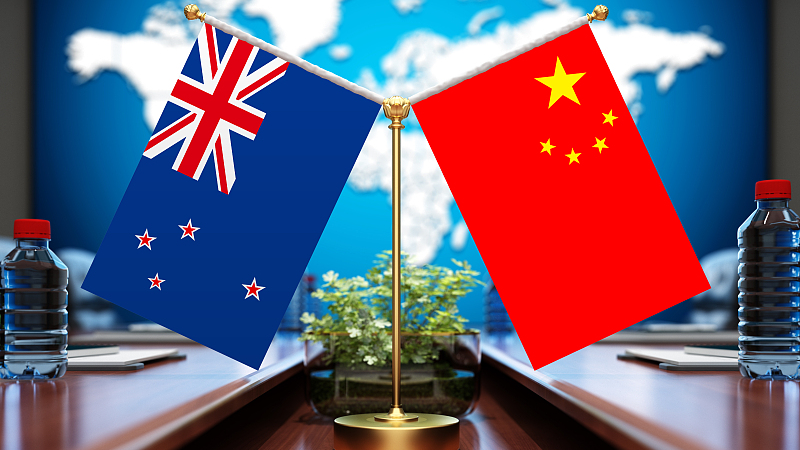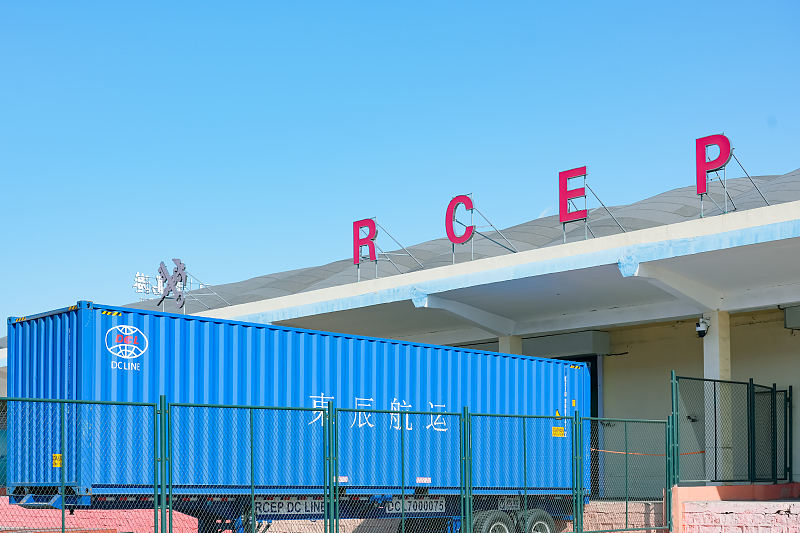
National flags of New Zealand and China. /CFP
National flags of New Zealand and China. /CFP
Editor's note: Yu Hong is senior research fellow of the East Asian Institute, National University of Singapore. The article reflects the author's opinions and not necessarily the views of CGTN.
At the invitation of China's State Councillor and Foreign Minister Qin Gang, New Zealand's Foreign Minister Nanaia Mahuta visited China on March 22. Mahuta's trip to Beijing was made possible by the easing of COVID-19 travel restrictions by both countries.
It was the first visit to Beijing by a New Zealand cabinet minister since 2019. The New Zealand government regarded Mahuta's visit to China as very important for re-establishing engagement between the two countries through in-person meetings. New Zealand's Prime Minister Chris Hipkins described Mahuta's trip to Beijing as New Zealand's first significant in-person ministerial visit since the global COVID-19 pandemic.
During the meeting between Mahuta and Qin Gang, they discussed wide-ranging issues of interest to both countries, including bilateral trade, investment, climate change and environmental protection, education and tourism. In addition, the two foreign ministers had candid discussions on hot-spot issues such as the Russia-Ukraine conflict and regional security.
New Zealand and China have a long relationship going back to the early 1900s. The two countries established formal diplomatic relations in 1972, and bilateral relations have grown since then. Mahuta's visit reflects the high importance New Zealand attaches to continuing its close trade and economic cooperation with China in light of the rapidly changing geostrategic and geo-economic situation in the region and beyond.
China is the world's second largest economy and one of the most populous countries, with a rapidly growing middle class. The Chinese consumption market offers huge potential for New Zealand’s firms and investors. China is the largest trading partner of New Zealand, accounting for around 30 percent of its foreign trade. New Zealand relies on the Chinese market for dairy products and other agricultural goods, such as meat and fruits.
The New Zealand-China Free Trade Agreement (FTA), signed in 2008, provided much impetus to bilateral trade between the two countries. This FTA was the first free trade agreement that China signed with a developed country.
According to the statistics released from New Zealand's Ministry of Foreign Affairs and Trade, the total value of bilateral trade in goods and services between China and New Zealand was over NZ$37.71 billion (about $23 billion) in 2022. Moreover, New Zealand enjoyed a trade surplus with China.
The upgrade of the protocol for the bilateral free trade agreement, which came into effect in April 2022, and the implementation of the Regional Comprehensive Economic Partnership (RCEP) are expected to further boost bilateral trade and investment between the two countries.
In January 2022, the RCEP officially came into effect. Both China and New Zealand are signatories of the RCEP agreement. The RCEP is a modern and comprehensive mega-regional trade agreement that covers a third of the global population and GDP, and is the world's largest free trade agreement.

RCEP customs inspection center in China's Qingdao City, January 28, 2023. /CFP
RCEP customs inspection center in China's Qingdao City, January 28, 2023. /CFP
According to the agreement, the 15 member countries will comply with common tariff rates, rules of origin, investment access, intellectual property and e-commerce. RCEP intra-regional common rules of origin will reduce the production costs of multinational enterprises in the regional supply chain. Enterprises can flexibly allocate production resources in RCEP member countries to reduce the production costs of final products and enjoy tariff preferences under the RCEP agreement. It will benefit China and New Zealand by granting wider market access and attracting more foreign investment to each of these countries.
The RCEP agreement will not only effectively reduce trade costs and eliminate market barriers between member countries, thereby facilitating trade and investment, but will also promote the process of economic integration in the region. The huge consumer market and economic strength of RCEP member countries will bring new business opportunities for enterprises in member countries to expand investment and increase market share. One year on, the agreement is already boosting trade among its member countries due to the reduction of tariffs and measures taken to facilitate trade. The flow of logistics, people and capital within the RCEP countries has become more frequent and convenient.
Chinese investment in New Zealand has increased over the years, in sectors ranging from primary industries and forestry, infrastructure construction, manufacturing and commercial businesses. On the people-to-people exchange front, China is New Zealand's largest source of foreign students and its second largest source of foreign tourists.
New Zealand recognizes China's integral role in its economy, in particular in terms of its economic recovery after the COVID-19 pandemic. New Zealand anticipates that further economic benefits will derive from China's development along its path to modernization.
(If you want to contribute and have specific expertise, please contact us at opinions@cgtn.com. Follow @thouse_opinions on Twitter to discover the latest commentaries in the CGTN Opinion Section.)